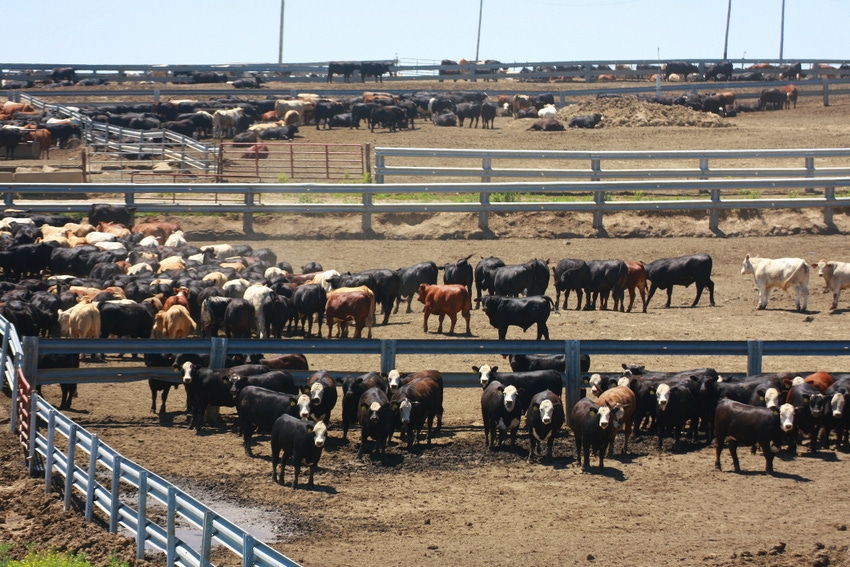Coalition seeks $150 million in farm bill funding for ability to quickly control and eradicate foot and mouth disease should it arrive in U.S.
July 19, 2017

Citing economic, food safety and national security concerns, an ad hoc coalition of more than 100 agricultural organizations and allied industry groups urged Congress to include language in the next farm bill establishing and funding a foot and mouth disease (FMD) vaccine bank.
FMD is an infectious viral disease that affects cloven-hooved animals, including cattle, pigs and sheep; it is not a food safety or human health threat. Although the disease was last detected in the U.S. in 1929, it is endemic in many parts of the world.
In a letter sent to the chairmen and ranking members of the Senate and House agriculture committees, the coalition pointed out that “an outbreak of FMD will have a devastating effect on all of agriculture – not just livestock producers – and will have long-lasting ramifications for the viability of U.S. agriculture, the maintenance of food security in this great nation and overall national security. An outbreak of FMD would immediately close all export markets.”
According to Iowa State University economists, an FMD outbreak in the U.S., which would prompt countries to close their markets to U.S. meat exports – thus creating a surplus of meat on the domestic market – would cost the beef and pork industries a combined $128 billion over 10 years if livestock producers weren’t able to combat the disease through vaccination. The corn and soybean industries would lose $44 billion and $25 billion, respectively, over a decade.
The letter noted that the annual job impact of such a reduction in industry revenue would be more than 58,000 in direct employment and nearly 154,000 in total employment, and economy-wide job losses would top 1.5 million.
“These costs can only be mitigated if the U.S. can mount a swift and thorough response once FMD is detected within our borders,” the coalition wrote. “Such a response is entirely reliant on having an adequate vaccine bank; there is no other option to prevent these catastrophic losses.”
The U.S. does not have access to enough FMD vaccine to handle more than a very small, localized disease event. Currently, the U.S. Department of Agriculture’s Animal & Plant Health Inspection Service manages a vaccine bank at Plum Island, N.Y., where vaccine antigen concentrate for a limited number of FMD strains is stored. If an outbreak occurred, the antigen would need to be shipped to manufacturers in England or France to be turned into finished vaccine and then shipped back to the U.S.
While the cost of establishing a robust FMD vaccine bank – $150 million annually – is “significant,” it pales in comparison to the projected economic consequences to the agriculture industry and to the nation’s food and national security, the coalition pointed out.
“An outbreak of FMD in this country would be devastating for the U.S. pork industry,” said Ohio pork producer Jim Heimerl, National Pork Producers Council (NPPC) president-elect and chairman of NPPC’s farm bill Policy Task Force. “The next farm bill must establish and fully fund a vaccine bank that gives us the ability to quickly control then eradicate this animal disease.”
National Cattlemen's Beef Assn. (NCBA) president Craig Uden stressed the importance of investing in an FMD vaccine bank rather than trying to contain an outbreak after the fact.
“Simply put, we cannot afford to be locked out of valuable foreign markets again,” Uden said. “It’s taken us well over a decade to get back up to speed in Asia after the 2003 (bovine spongiform encephalopathy) scare, and we must have support and full funding for this FMD vaccine bank to protect for our vital industry. The consequences would be catastrophic.”
Uden recently returned from a trade mission to China, which just reopened its borders to U.S. beef for the first time in nearly 14 years.
The letter to Capitol Hill’s agricultural leaders was spearheaded by NCBA, NPPC, the American Sheep Industry Assn. and the National Milk Producers Federation.
You May Also Like

.png?width=300&auto=webp&quality=80&disable=upscale)

